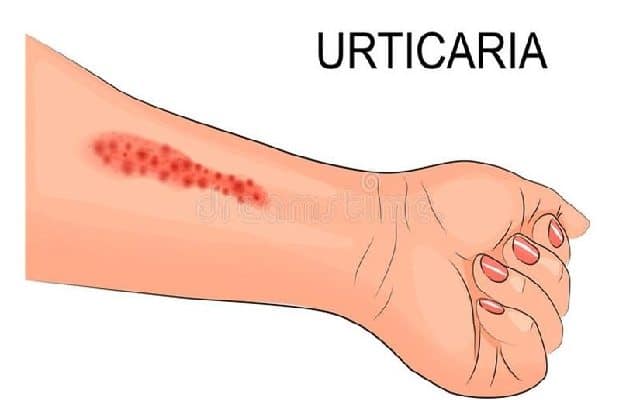New Delhi: Urticaria is a skin disorder that is characterised by very itchy weals (hives) consisting of red or skin-colored itchy bumps which can appear on any part of the body. Doctors say that it is a disorder which affects about 20 per cent of all people at some point of time during their lives.
One in five children or adults has an episode of acute urticaria during their lifetime. It affects all races and both sexes and can have swelling over multiple parts of the body such as face, eyelids, ears, mouth, hands, feet, or genitals, etc.
“There are two types of urticaria — short-lived (acute) and long-term (chronic). Neither is typically life-threatening, though any swelling in the throat (or involving the lips) or any other symptom that restricts breathing requires immediate emergency care. If it lasts for more than six weeks, it is known as chronic urticaria,” said Dr Bhawuk Dhir, Dermatologist at RML Hospital.
Talking to IANS, Dr Dhir said that acute urticaria is typically easier to manage and resolves after short term treatment. A single episode of hives does not usually call for extensive testing. However, if there is a sudden onset of hives, swelling of the lips which can create difficulty in breathing or BP the fluctuation then it is likely an anaphylactic reaction and requires urgent medical care, he said.
Acute urticaria can occur in newborns and infants but is uncommon. However, it is caused by infection in the children and by food, medication, and inhaled allergens are also important causes in older children. In adults, urticaria is usually idiopathic and spontaneous.
“While chronic urticaria causes marked distress to patients because it is physically uncomfortable, waxes and wanes unpredictably, interferes with work, school, and sleep, and is often difficult to treat. The severity and duration of symptoms vary among individuals, and the underlying cause is not known in many cases. In some patients, an identifiable trigger is found and the disease may be controlled if adequate precautions are taken”, Dr Dhir said.
Chronic Urticaria is rarely a sign of another underlying disease. When it is, the hives (raised red spots) are usually accompanied by other symptoms that are noticeable to the patient. Almost 50 per cent of patients experience remission within one year.
Dr Dhir said that Antihistamines – available either over the counter or by prescription – are the recommended treatment for hives. They work by blocking the effect of histamine, a chemical in the skin that can cause allergy symptoms. However, avoid taking steroids on your own in urticaria as they are known to cause many adverse effects and no longer recommended as first choice by various international consensus guidelines, advised dermatologist Dr Dhir.
By Avinash Prabhakar



















